Luffenholtz Beach and Houda Point
Trinidad Coastal Land Trust
Click for map.
The tide would hit a low of 0.1 feet (not so great, but not so bad) around 4PM, so I was aiming at the afternoon for the beach to see the tide pools. First up, Luffenholtz Beach (dark orange upper track on the map). There's supposed to be tide pools and it certainly looks a bit rocky.


I headed down the steps and swung to the left since the alternative was crossing the significant water pouring across the sand as Luffenholtz Creek. The beach doesn't go very far that way before ending in the rocky discards of Houda Point. There's plenty of places for things to cling with all those rocks, but pools were few, shallow, and sandy. I wasn't seeing much in them although I did catch a fish zipping away as I approached one.


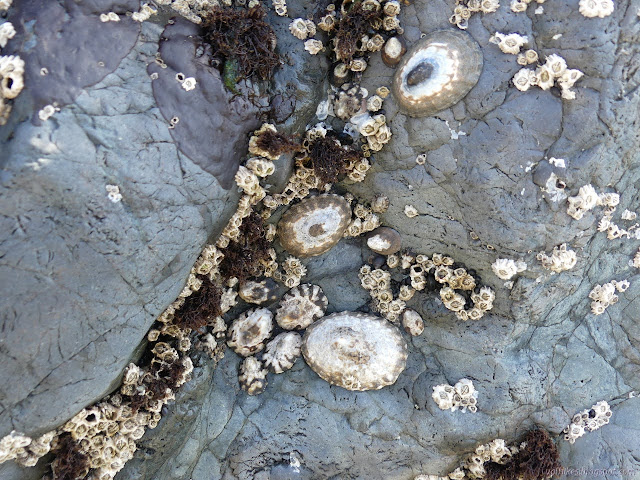
I poked around a big rock studded all over with mussels, big ones toward the bottom and getting smaller on the way up. Once I got past looking at the rock itself and started focusing on the surface, I spotted the stars of the intertidal zone.


I headed back to cross over the creek. High enough up, it was possible to cross on boulders and logs, although it required balancing across surprisingly long log sections to do it.


I headed again to the high tide covered areas of another big rock. These rocks on the beach at low tide are partly covered at high tide. Does that make them part of the California Coastal National Monument? I found more starfish, clustered so thickly they were on top of each other. I finally found sea anemones bigger than a quarter, and some of there were huge. They were also closed up into dark blobs decorated with broken shells.




I wandered a little more where the more usual tide pools of depressions in rocky areas. It's rather hard to travel around there, although many have and the tops of the rocks tend to be clear. The pools didn't have much in them and were a bit cloudy if they had any depth.

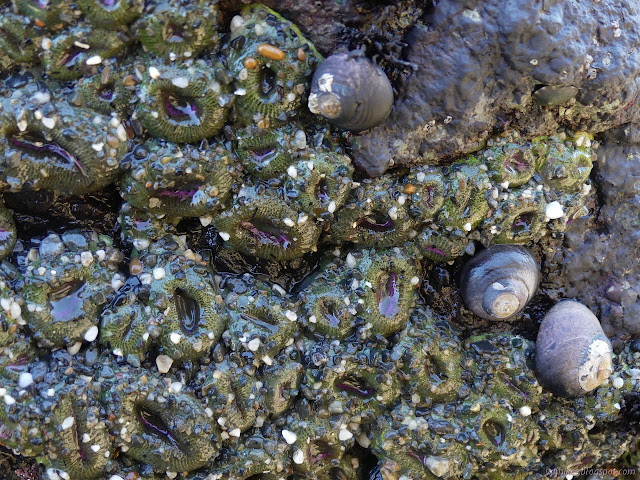
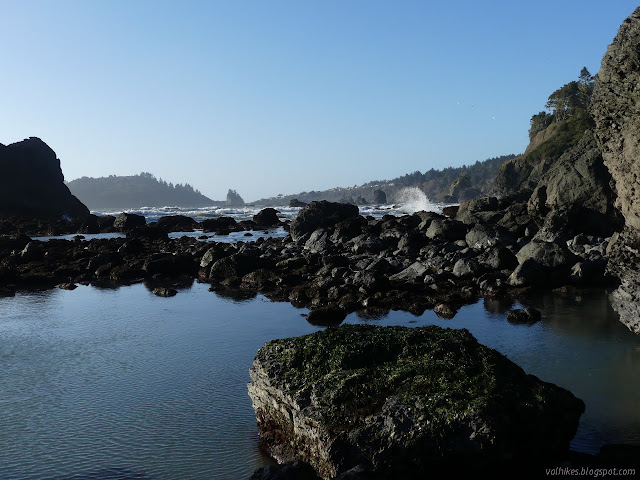
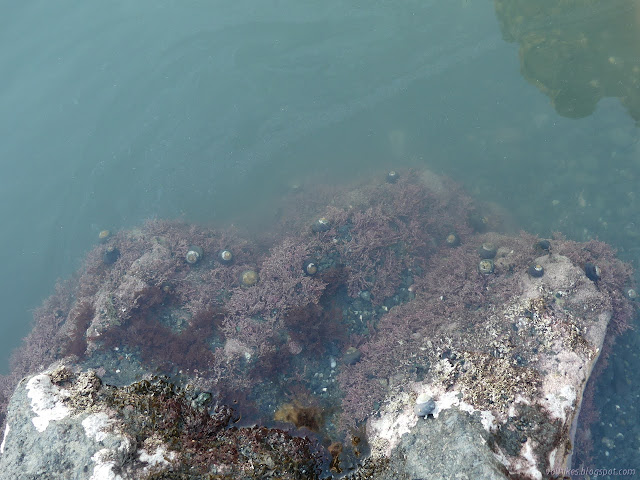
Then I noticed I was looking and not seeing again. As I watched snails in the murky pool, one of them got up and started walking around. Then more and more. They were nearly all hermit crabs, little claws working away at the kelp, feet and eyes extended.
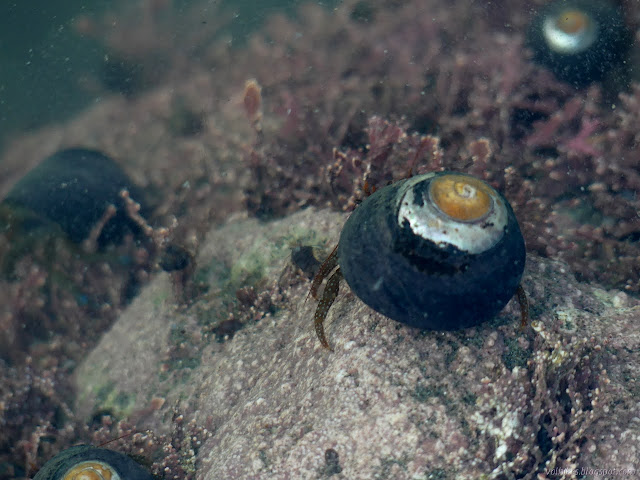
I headed back, crossing the creek a little further down, which required more rock climbing than the spot I used the first time. This beach is considered a fishing beach and a few had arrived who were actually out to partake in that activity. Mostly, people were just looking around the pools or relaxing.
Next I headed to Houda Point Beach (light orange lower track on the map). This one gets a bit more traffic and I found a fellow painting at the top of the steps and a frequent flow of surfers up and down. It is the surfing beach and they beat a consistent path down the steps and across the beach.
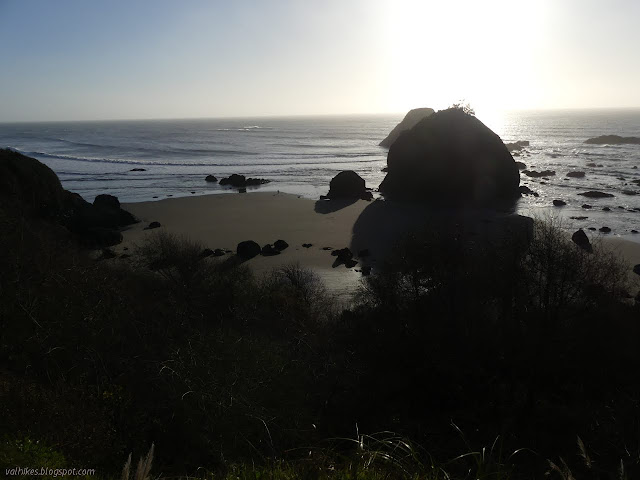
The path drops down via those steps and splits at the low point. The surfers all head down the north steps. The steps down the south side look nice too. I continued along the spine of land as the path climbs again onto the point itself. I took the spur up to a high point and lookout.
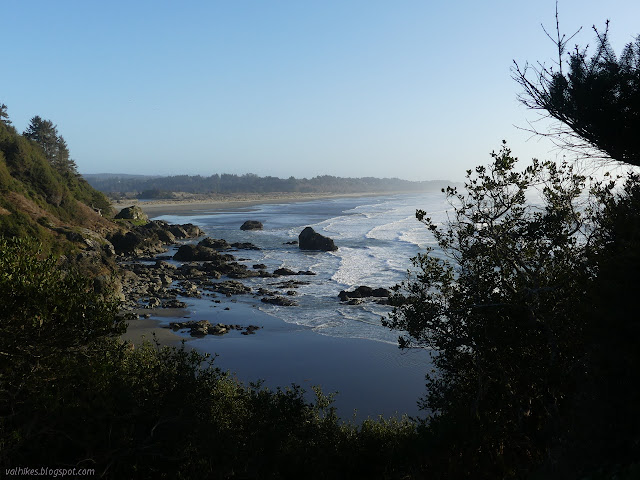

I continued along the trail, which continued down the southwest side of the point until becoming a rocky mess. I clambered down the groove in the rocks without too much trouble, but it really gets sketchy at the bottom. I probably should have gone back up and taken those nice steps down the south side instead as I then turned to the nearly empty beach to the south. At high tide, it is Houda Cove.
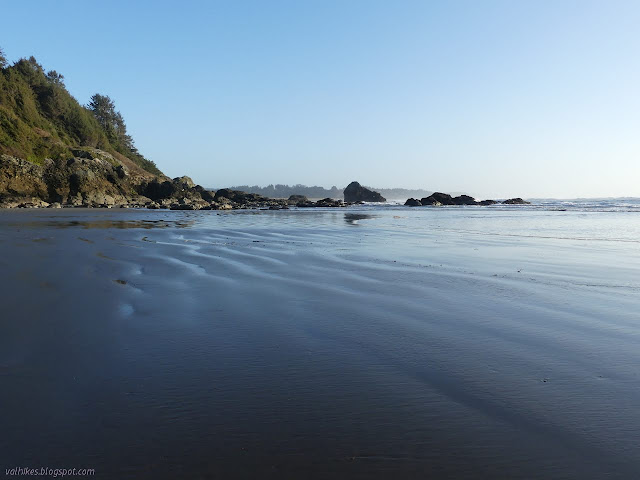


I got a shoe wet when I didn't quite pay enough attention to the turning tide and increasing wave runs. Ripe for a sneaker wave attack! I headed back toward the point, noting that the south steps look pretty good from the bottom, too. I didn't take them. I headed around the point finding that it has some caves with pools in the bottom and water dripping from the top. There's a little bit of life in and around them. It's rather like a tide pool display, raised up for easier viewing.
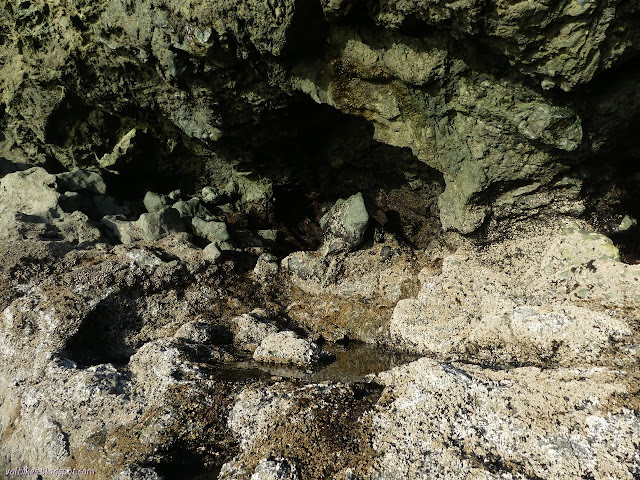


Really everything seems to be raised like a display. I finally noticed it, the thing like a high water line. It is everywhere on both beaches, maybe 2.5 feet up. Beaches don't get high water lines. They have a high water zone where the effects of wave erosion diminishes to nothing. This is a line below which only a few little animals like barnacles and mussels and sea anemones are holding on. It's a high sand line. This beach used to have a lot more sand on it. Well, that happens on a seasonal basis, but I can't recall seeing that have such a stark, consistent effect.
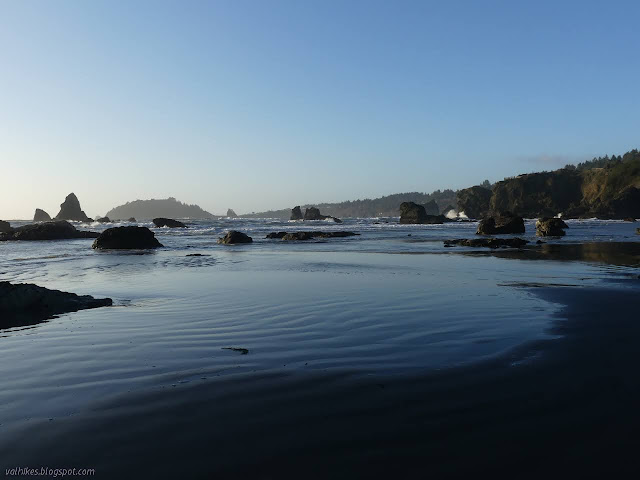

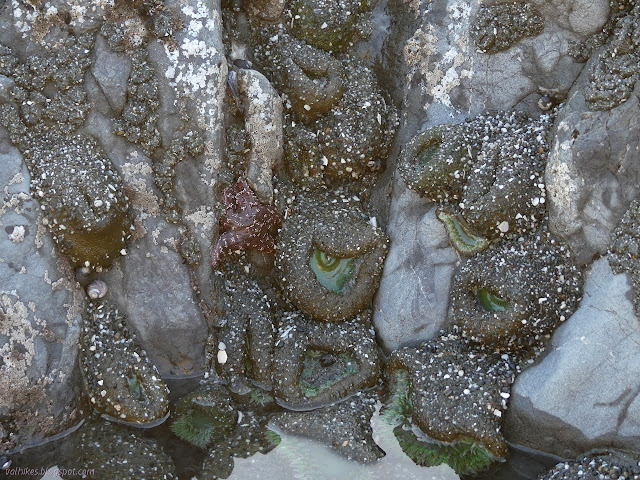
I headed back, pausing along the line the surfers take. I clicked a picture or two, but figured the guys with the really big lenses were probably getting plenty. Maybe even with an appropriate polarizer for the sunlight. I then continued up the north side stairs. There's a lot more of them than at Luffenholtz Beach.
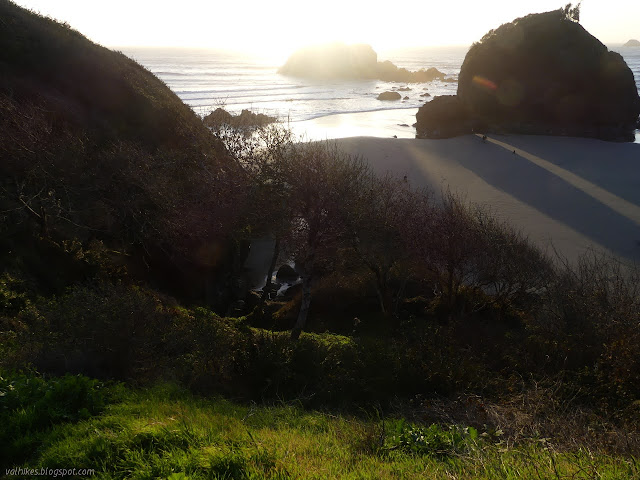
Lastly, I headed down the trail at the top of Tepona Point (yellow middle track on the map). There's a few parking spaces by the road and a few more down a short spur road. The path is a narrow, short thing that drops a little on steps, then winds out to an observation area.
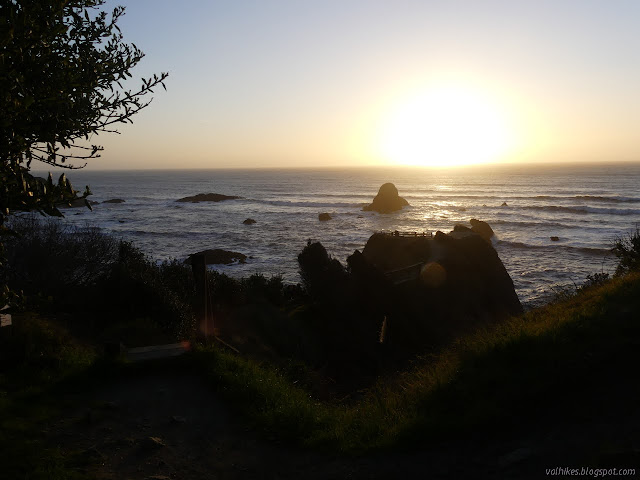
I headed down to the end and observed a bit. Just the obvious stuff: the beaches to either side, the surfers, the rocks, and the sunset. The rocks here have the largest colonies of a few other birds. I only observed some boring old sea gulls. Those come in a lot of varieties also.

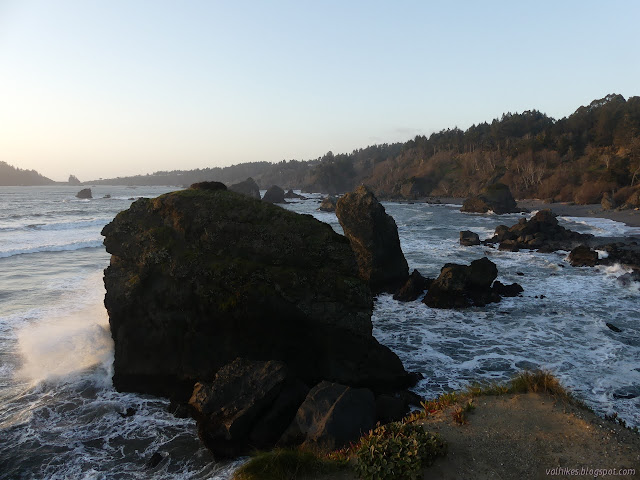
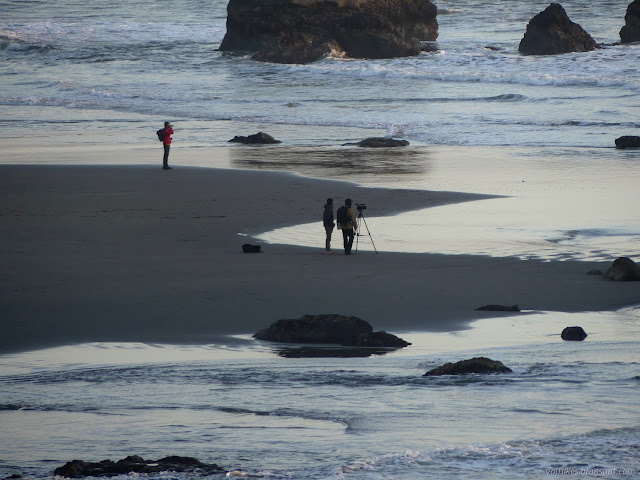


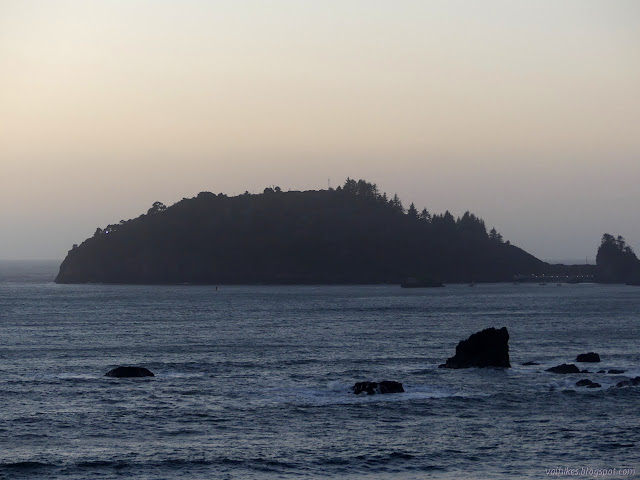
I headed back after the sunset. It had been breezier earlier so wasn't quite so cold as when the sun was up.
©2021 Valerie Norton
Written 2 Mar 2021
Liked this? Interesting? Click the three bars at the top left for the menu to read more or subscribe!




Comments
Hmmm, is a sneaker wave one that gets your sneakers wet?
Sneaker waves are the ones that are bigger than the general wave that they tell you to watch out for. "Never turn your back on the ocean." They don't actually tell you what to do if you see one coming. Maybe if there's nowhere to run higher on the beach, you just flatten yourself against the cliff? Least chance of getting washed out to sea then?
Those things are real! I was got by one on the jetty by Morro Rock! I was actually on a rock down lower in front of it and nothing was coming anywhere near the top of it. I was crouched getting these great wave splash photos with my silly little square photo camera when I noticed something through the view finder looked very off. I stood up abruptly and a wave washed over that rock right up to my knees! My can of Squirt was embedded in a crevasse. I wasn't too worried about the soda, that was our least favorite, but I couldn't get the litter back out of the rock.
Anyway, the one that got me this day was just the tide coming in.
For the sneaker waves, you've usually not got a lot of time to do whatever you're going to do. I had just enough time to get into a better balanced position, but I had been looking at the world at an artificial distance through the cheap camera viewfinder. Luckily it was enough because those waves wash people out to sea. Fun fact: tidal waves travel nearly 500 MPH in deep water. Wind blown waves travel at speeds more like a car than a jet, but there still isn't a lot of time to do something between discovering it's coming and getting hit.